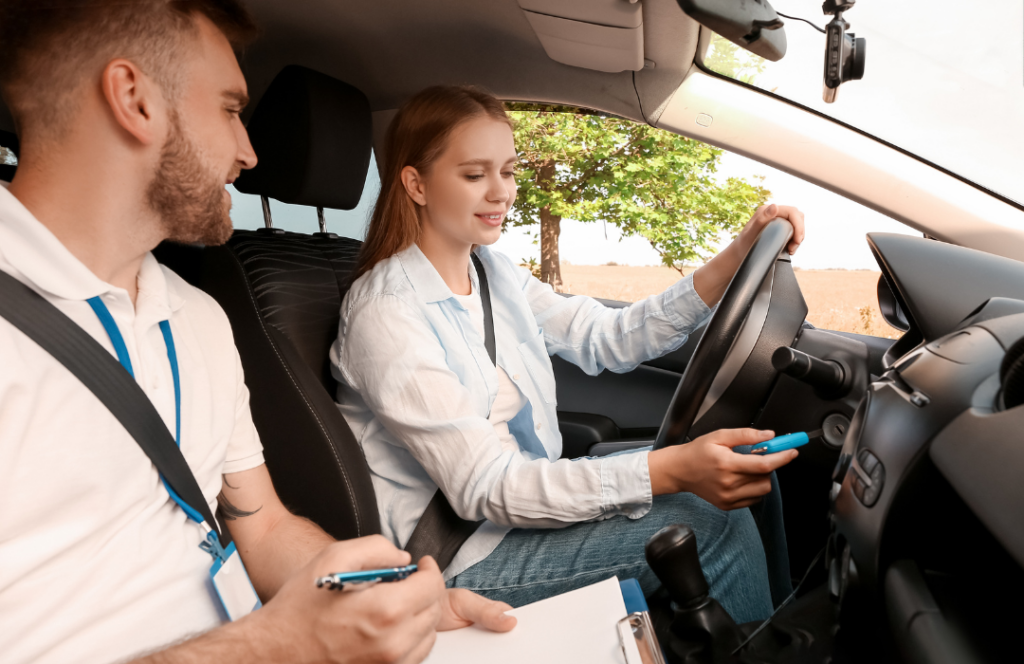For someone who is living in the United States for educational purposes, work or permanently, securing a driver’s license is an important step. Apart from being a driving permit, it serves as an important ID document as well. In the guide, we will cover the essential tips that assist in the application process and everything in between, including the basic requirements.
Benefits of A Driver’s License In U.S. [2023]
In the United States, a driver license is a legal document issued by the Department of Motor Vehicles or its equivalent in each State. It not only allows the permit holder to legally drive a motor vehicle on public roads, but also is a widely accepted identification. While for many citizens, this is just another form of ID, for migrants, this document serves as a passage to greater mobility, employment, and integration to American society.
Acquiring a driver’s license fulfills a very crucial need among migrants particularly hailing from Latin America. The sheer scope of the American landmass and the dependence on road networks enable mobility through personal vehicles to be a necessity. This is true for a state like Florida, where the roads stretch for more than 121,000 miles. In such scenarios, a driver’s license becomes even more valuable due to the fact that it is mandatory for many job applications.
A License as a Multi-purpose Document
With its fundamental purpose as a driving permit, it is imperative to highlight that a driver’s license in the U.S. serves as a form of recognized identification. Its primary importance can be shown during the process of job recruitment and securing a house or even opening a bank account. Therefore, it aids in carrying out so much of daily life work and economic functions in America.
Key Functions of a Driver’s License
- Legal Driving Authorization: Grants permission to drive on public roads throughout the United States.
- Identification: Serves as a widely accepted form of official identification.
- Access to Services: Facilitates enrollment in services and activities that require ID verification.
Benefits of Having a Driver’s License
- Independent Mobility: Enables freedom to travel and commute independently.
- Greater Employment Opportunities: A lot of companies ask workers to present a well-maintained driving license.
- Global Acceptance: A driver’s license from the U.S. is accepted in many countries, which is convenient for travelers.
Learn the Procedure
Within the USA, there is a Department of Motor Vehicles representative for each State with protocols in place for distributing licenses. In general though, it usually includes:
1. Submission of Documents: Showing the necessary ID, residency document, and legal document.
2. Test Check: Completing a written test about the rules of the road and other necessary laws governing traffic.
3. Follow Driving Skills: Carrying out normal driving procedures.
4. Payment of fee: Application, issuance, and other relevant fees required paying.
For those migrants who come under certain humanitarian programs or wish to regularize their status, these steps are very important to know in order to accomplish that procedure.
Step 1: Figure Out the License You Need
Deciding what kind of a license you require is the first step. In the US, licenses are categorized by the type of vehicle you intend to use:
– Class A: For operating any vehicle that weighs over 26,000 pounds and towing a trailer that weighs more than 10,000 pounds.
– Class B: For vehicles that weigh over 26,000 pounds.
– Class C: For small buses or vans for carrying passengers.
– Class D or E: Used for non-professional cars, motor bikes, etc.
To get the proper license, consider what you want to accomplish or do: whether its working in a transport service or just using a private vehicle.
Step 2. Check What Your State Requires
In comparison to many countries in Latin America, the US does not issue a uniform driver’s license. Every state has its own rules and regulations regarding the issuance of this legal document. However, the requirements are more or less very similar in most of the states. For one, in Florida, an applicant must:
– Have a minimum age of 16.
– Submit an identification document such as a passport, a birth certificate or an immigration card.
– Give a social security card number or a form I-94, an Arrival/Departure Record, if they don’t have a social security card.
– Show evidence of residence in the state by means of utility statements or a lease agreement bearing your name.
Step 3. Take the Traffic Law and Substance Abuse Education course (TLSAE)
In America, it is a prerequisite to undergo traffic safety instruction as part of moving towards getting a driving license. In Florida, for instance, one has to carry out the Traffic Law and Substance Abuse Education (TLSAE) course which is a requisite for driving. This program lasts approximately four hours and is easily self-paced since approved state boards allow it to be done online, costing around nineteen American dollars.
The TLSAE course is important to undertake as it raises awareness of traffic laws and substance abuse and their effect on driving. If you have taken a similar course somewhere else, you can forward the relevant certificate and this requirement will be waived. This way, all drivers are guaranteed to understand the scope of risks and responsibilities that are related to operating a vehicle.

Step 4. Prepare for the Written Driving Test
Your progress often appears to be stopped at all levels of the driving test and licensure. The learner must pass a written examination and a practical driving test. In a written test, your traffic regulations and understanding of road signs and safe driving techniques are evaluated, and the practical driver test is centered on your driving abilities in a live environment.
So start preparing now. One of the most effective studying aids are the driver’s manual instructions for your state. There are also some practice tests available online which are very close to the real DMV tests. For example, the Inmigreat app has a very interactive and enjoyable studying process, which will make you more prepared for the test.
Step 5. Take the Written Driving Test
The Cost at the DMV, where it is administered, ranges from $20 to $50, but your specific state’s Department of Motor Vehicles sets the price and the range as between twenty to fifty clipper dollars. This test exam is directly connected with your understanding of traffic rules, road safety measures, and the controlling of the automobile. There is as well no other option to build road sense other than through construction.
Use DMV practice tests along with the state’s driver manual to assess your weak spots. Knowing fundamentals like speed limits, signs, and right-of-way rules will form a solid base and ensure you succeed.
Step 6. Pass the Driving Skills Test
It’s perfectly reasonable to feel anxious or overwhelmed by the driving test, but it doesn’t have to be that way. With ample preparation, I know you will tackle it with confidence. Here are some recommendations to help you prepare:
– Use a roadworthy vehicle: The car you plan to use must be in good working condition, insured, and meet safety standards.
– Practice extensively: Lessons from a certified instructor are highly recommended for new drivers.
– Familiarize yourself with the protocols: Make sure to adjust your mirrors, check your lights before starting, and fasten your seatbelt.
– Understand the rules: Traffic laws differ for each state so ensure you check the state driver’s manual first.
– Dress sensibly: Make sure the clothes you wear enable you to focus while allowing for unrestricted movement.
– Arrive early: Reaching the testing site ahead of time will make it easier for you to get familiar with the new location, and in the process, calm your nerves.
Depending on where you’re located, driving tests can be anywhere from fifty to a hundred dollars. Once the driving test has been passed, a person is issued a driver’s license. In order to obtain a drivers license, one must pay a state fee that can differ anywhere between twenty to one hundred dollars.
Advice for the Applicant
- Get a hold of the Driver’s Manual: This document will prove useful to you in both the written and practical exams.
- Enroll in driving school: Learning from a teacher at a driving school is super valuable, especially for new learners.
- Get in touch with the DMV in your state: Get in contact with the DMV in your state to confirm a certain set of prerequisites, some states are known to issue extra requirements such as taking a defensive driving course.
Additional Thoughts
An important thing for foreigners to note is that within the US there’s a possibility of traffic rules varying from state to state. Because of this, it is important to read and learn these local regulations in order not to infringe them and to ensure safe driving.
For someone from a different country, getting a US driving license starts with following a list of predetermined steps that require discipline and thorough preparation. By meeting each step along the way, it is possible to permanently relocate to the United States and drive legally within the country.
